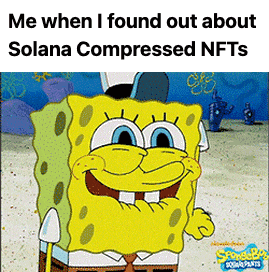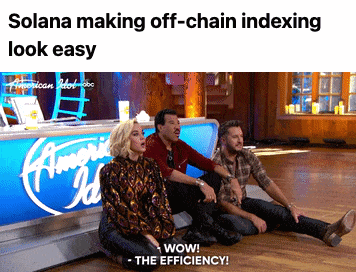Solana, a high-performance blockchain platform designed to beat Ethereum in scaleability and transaction cost, has once again brought a charm to the table with its concept of compressed NFTs. Up until now, Solana has always kept up with its commendable reputation as an ideal platform for various decentralized applications and use cases. Least to say, its speed, scalability, and low fees set an unbreakable image of the company. Solana has gained significant traction in areas such as decentralized finance (DeFi), non-fungible tokens (NFTs), gaming, and more. Adding to that, the platform recently hit new bars with the development of compressed NFTs by Solana Labs and Metaplex. With the debut of this new technology, a whole stream of discussion has now opened, and the NFT market eagerly awaits what lies ahead.

Compressing NFTs
It can be a little challenging to wrap your head around the whole idea of compressed NFTs (Non-Fungible Tokens) since it is still very new to the blockchain universe. Although dotting the i's and crossing the t's of this brand-new tech might not be an absolute necessity, it is always worth the effort!
Compressed NFTs offer an enticing alternative to traditional NFTs, providing cost-effective and efficient solutions for minting and storing digital assets. But how does this compression work for NFTs?
To many, the term “compressed NFTs” might hit off with the idea of compressed files that we all know as ZIP files. However, compression with NFTs does not work like that at all. Compression, in the context of NFTs, is akin to using advanced algorithms to shrink the size of your digital creations without compromising their quality or authenticity. According to Alchemy’s definition: “Compressed NFTs are NFTs on Solana that store their data in a Merkle tree structure where the Merkle root is on-chain in an account and the Merkle leaves are stored in the Solana ledger (which is off-chain, but subject to consensus), rather than fully on-chain like conventional NFTs.”
In effect, it works like magically fitting numerous high-resolution images into a tiny virtual backpack. This innovation reduces the costs associated with minting and storing NFTs on the Solana network, making it an attractive option for creators looking to unleash their creativity on a larger scale. So, if you were an artist with an abundance of digital creations ready to be transformed into traditional NFTs, the thought of high minting costs and storage expenses would have surely dampened your enthusiasm. But with Solana's Compressed NFTs, the game has changed now.
Understanding Compressed NFTs with Merkel tree structure
Compressed NFTs are a product of Solana's state compression technology, which enables the storage of data on-chain in a more compact and economical manner. While traditional NFTs can be costly to mint and store due to their larger size, compressed NFTs significantly reduce the storage costs without compromising their uniqueness and authenticity.
Solana's Compressed NFTs utilize the Merkle tree structure to store their data off-chain. Think of Merkle trees as digital forests, where each tree represents a collection of NFTs. In the Gummyroll program developed by Solana, the roots of these trees are stored and updated on-chain in a buffer stored in a program account. To delve deeper into the subject, Merkle trees provide a robust and efficient structure for storing NFT data off-chain. In the given structure, the modifications such as minting, transferring, or delegating NFTs are encoded into the Solana ledger. This approach offers advantages over traditional on-chain storage, as it minimizes the burden on the blockchain's resources and ensures faster transaction processing while maintaining the integrity of the NFT ecosystem.
Indexers
Another component to contribute to the successful operation of compressed NFTs is an off-chain indexer. Off-chain indexers observe changes to the Merkle trees via the Solana ledger. These indexers play a crucial role in caching NFT-related metadata, data, and proofs required by decentralized applications (dApps) and smart contracts.
By offloading data retrieval and caching processes to off-chain indexers, Solana ensures that dApps and smart contracts can access NFT information swiftly and efficiently. Hence, the need for direct on-chain interactions for every transaction or data retrieval is significantly reduced, leading to improved scalability and overall network performance.

Looking back, with regard to Solana’s compression of NFTs, the whole technology focuses on reducing the strain on the main chain, giving it the leverage to process transactions faster. Although with metadata, it does not go fully off-chain but stores them in a ledger instead of creating separate accounts. This makes the whole system more efficient.
Conclusion
Solana's Compressed NFTs represent a significant advancement in the world of digital asset ownership. Through compression technology, Merkle trees, and off-chain indexing, Solana has successfully addressed the challenges associated with scalability, cost, and storage requirements in the NFT ecosystem. As compressed NFTs continue to gain traction, their impact on various industries and creative domains will undoubtedly be transformative. By providing a scalable, cost-effective solution, Solana's Compressed NFTs are democratizing access to digital assets and paving the way for a new era of ownership and innovation.